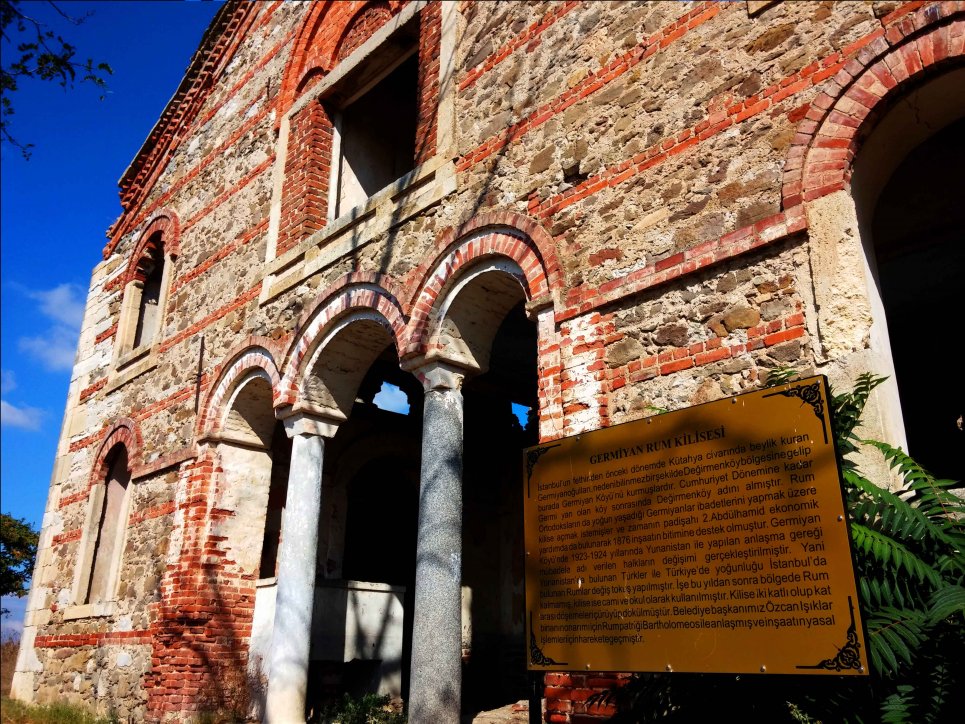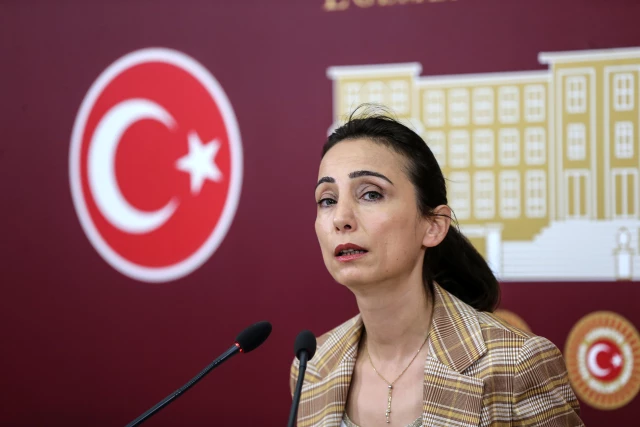There are now more and more allegations – even by Turkish agents – about the destruction of ancient and Byzantine churches in Turkey, either by arbitrary construction or by treasure hunters in the hope of finding gold and other relics.
These churches were abandoned after the Greek Genocide and the population exchange between Greece and Turkey.
The General Director of Culture and Tourism of the Municipality of Tralleis (Τράλλεις, Turkish: Aydın), Umut Tuncer, appealed to the Turkish judiciary against the erection of walls at the entrances of a 130-year-old Greek Orthodox Church.
These walls, which block access to the church, were built in order to obtain a license to sell alcohol in a neighboring restaurant!
Following the investigation, the walls were demolished and Umut Tuncer was asked to transfer ownership of the church to the Ministry of Culture and Tourism, which he eventually did.
At the same time, he appealed to the court to punish the perpetrators.
For Turkish official , “this is an issue that needs to be clarified. We intend to make the most of the space. In case there is a request from the Orthodox of the area, we could use it as a church. Otherwise it will become a museum.”
It is pointed out that restaurants are required to be at least one hundred meters away from places of worship, however, with the construction of these walls, the relevant distance do not have to be observed.
Agios Ioannis in Prousa (Προύσα, Turkish: Bursa): Aim of treasure hunters
At the same time, the historic church of St. John in Prousa became a target for treasure hunters.
The church was initially in danger of collapsing due to lack of maintenance and then became a target for treasure hunters.
The ruins of the church, which has a history of 900 years, were located by a drone.
The church of Agios Ioannis – in Triglia of Prousa – was restored from time to time, however when the Greeks of the area left it became a target for treasure hunters.
The roof of the building has been permanently destroyed, while treasure hunters have dug deep holes in the floor.
According to a local guide, “after the War of Independence, the Greeks were forced to leave the area. Turks from Thessaloniki and Crete settled in Triglia. However, after some time they were seized by the desire to search for treasures.
“We call on the authorities to monitor the matter. Everything resembles a battlefield. This is a sad situation. The church is very important, it was built in 1,100 for the approximately 5,000 Greeks living in Triglia. We hope it will be renovated and given again for public use.”
Germiyan Church in Eudoxiopolis (Εὐδοξιόπολις, Turkish: Silivri)
Respectively, in the area of Eudoxiopolis there was another attack by treasure hunters.
At a 185-year-old historic church that is barely trying to stay afloat, known as Germiyan, treasure hunters dug holes in the hope of finding gold.

The church was built in 1836, was initially abandoned by the Greeks in 1913 due to wars and then was left to its fate permanently with the exchange of populations in 1923-24.
It was later used as a mosque and as a school.
The neglected historic church over time was deserted and looted by treasure hunters.
“Sto hammer” church in Prousa
Meanwhile, in an ad posted on the internet, a church in Prousa is being sold for 6,300,000 Turkish liras (about 700,000 euros).
According to the ad, the privately owned church could function as an art site, museum or hotel.
The name of the church, as well as its location were not made known, in the context of “protection of commercial and personal data”.
The church, it is noted, was built for the Armenian population of the area – which was abandoned with the exchange of populations – and was later used as a tobacco warehouse and textile factory.
The church is located on a site included in the UNESCO World Heritage List.
Parliamentary question on the ad
On the subject of the ad, a parliamentary question was even asked by the MP of the pro-Kurdish HDP party, Tülay Hatimoğulları, to the Minister of Culture and Tourism, Mehmet Nuri Ersoy.

The MP’s question states that:
“Churches that have no believers, have been left to their fate, have been turned into stables and warehouses and are being looted by treasure hunters. There are also several privately owned churches available through classifieds.
“However, churches cannot be private property and sold, just as synagogues and mosques must be open to the public.”
The MP also asked the minister to find out how many titles of churches and monasteries belong to the ministry and whether there are plans to return to the institutions of Greek, Armenian and Syrian-Chaldean churches.
Restoration of Saint Georgia in Kaisareia (Καισάρεια, Turkish: Kayseri)
However, there is good news… A historic 721 years old church, Agios Georgios in Kaisareia, which was looted by treasure hunters, is expected to be restored by a decision of the municipality.
In a recent speech by Turkish President Recep Tayyip Erdoğan to EU ambassadors, he noted that:
“At a time when anti-Islamism and cultural racism are on the rise in recent years, we are restoring churches, monasteries and synagogues from our own budget and our own pocket.”
Of course, unfortunately, the destruction of churches and shrines has now become more massive and uncontrollable, compared to the restorations that are rarer, difficult and costly, no matter how much Turkey tries to invest in religious/Christian tourism.
Maria Zacharaki is a correspondent for Ethnos.


No hay comentarios:
Publicar un comentario